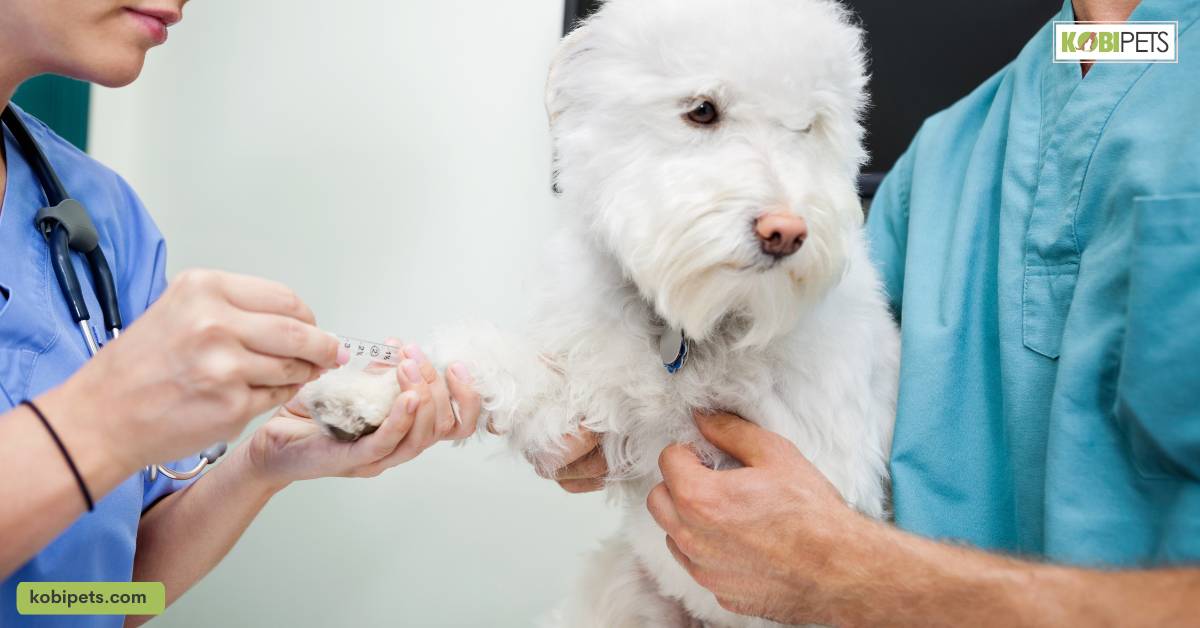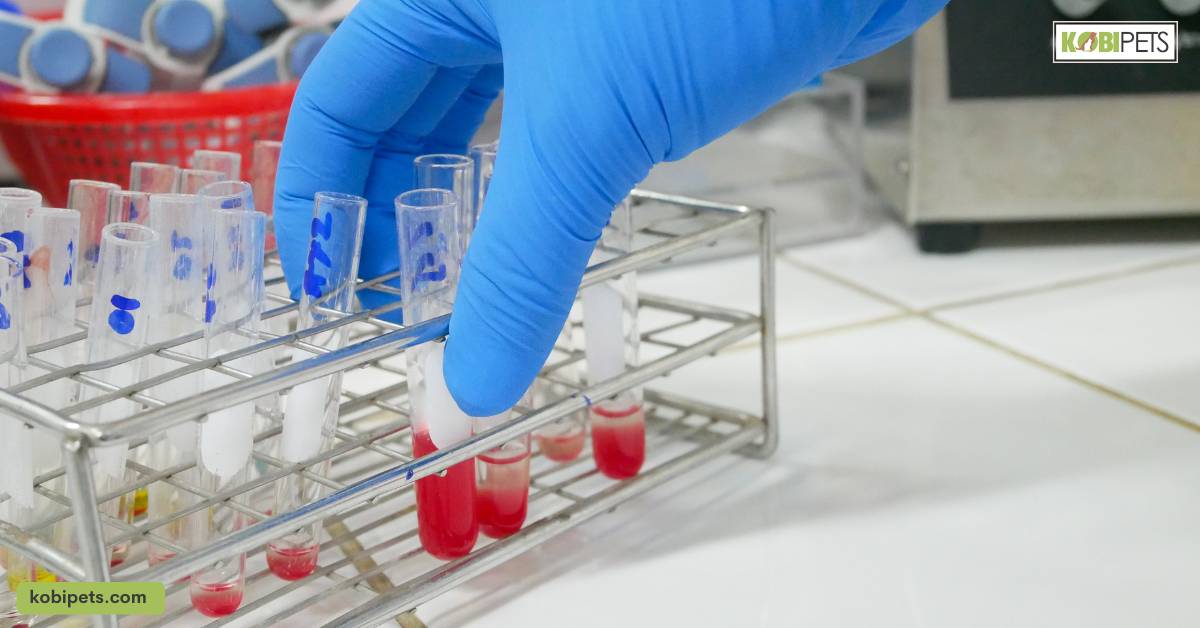Just like humans, our canine friends also have different blood types, adding another layer to their already diverse nature. While this might be news to some of us, scientists have actually identified over 13 canine blood groups.
The most significant canine blood types belong to the Dog Erythrocyte Antigen (DEA) system. DEA 1.1, DEA 1.2, and DEA 3 are among the most common. Importantly, DEA 1.1 negative is the universal blood type for dogs, similar to our O negative in humans.
What Are Dog Blood Types?
Dog blood types are fascinating, and while it might seem a bit complex at first, understanding them can be simplified in the following points:
- Dog Erythrocyte Antigens (DEAs): These are the antigens present on the surface of the red blood cells. They define the blood type of the dog. The scientifically recognized DEAs include 1.1, 1.2, 3, 4, 5, and 7.
- Positive and Negative Blood Types: If a specific antigen is present in the red cells, the dog is said to be positive for that blood group. Conversely, if the red cells lack a given antigen, the dog is negative for that blood group.
- Significance in Blood Transfusion: This classification is crucial, especially during blood transfusions. Giving a dog the wrong type of blood can lead to severe health consequences. This is why vets always ensure the blood group matches before performing a transfusion.
- Blood Type Inheritance: Just like in humans, the blood type in dogs is also inherited. This means that the puppies will inherit their blood type from their parents.
Transfusion Reactions
Understanding transfusion reactions is crucial to safeguard the health of our canine pals. When administered with the wrong blood type, dogs’ strong antibodies recognize the foreign blood and attack it.
Monitoring signs of such reactions is critical, as they can vary from subtle to severe. This includes changes in heartbeat, difficulty breathing, collapse, drooling, tremors, convulsions, weakness, vomiting, and fever.
However, severe reactions are rare in dogs, thanks to the diligent efforts of veterinary staff who recommend testing before transfusions and monitor dogs closely during the procedure. It’s all about keeping our four-legged friends safe.
First Transfusions
The first blood transfusion your dog has is a critical one. Usually, this happens under emergency circumstances. Intriguingly, dogs do not have naturally occurring antibodies like humans or cats, meaning they can accept any blood group the first time.
However, this first exposure primes their immune system to recognize and potentially react against incompatible blood types in future transfusions. To avoid risks, it’s advisable to determine the dog’s blood type before any further transfusions.
Remember, the goal is to keep our dogs healthy and safe, and understanding their blood types is a significant step towards achieving that.
Canine Blood Types and Breeds
The relationship between canine blood types and specific breeds is an interesting aspect of veterinary science. Some breeds have a predisposition towards certain blood types. This information can be crucial for canine health, especially when it comes to blood transfusions.
Let’s explore which breeds are commonly associated with certain blood types, and why it might be a good idea to know your pup’s blood type.
DEA 1.1 Positive and Negative
Interestingly enough, a dog’s breed can often determine its DEA 1.1 group. For instance, golden retrievers and labradors are frequently DEA 1.1 positive. This means they can only donate blood to other DEA 1.1-positive dogs.
Dog breeds such as greyhounds, boxers, Irish wolfhounds, German shepherds, Dobermans, and pit bulls are more likely to fall into the DEA 1.1 negative group, making them universal donors.
But remember, it’s always essential to have your dog’s blood type tested for absolute certainty.
The Importance of Knowing Your Dog’s Blood Type
Knowing your dog’s blood type isn’t just for scientific interest—it has practical implications as well. If your dog ever requires a blood transfusion, knowing their blood type can save invaluable time and potentially their life.
DEA 1.1 negative dogs, the universal donors, are in the minority, so their blood is highly valued in emergencies.
By knowing your dog’s blood type, you can make informed decisions about their healthcare and also contribute to the canine blood donor program if your pet is eligible.
Testing for Dog Blood Types
To ensure your dog’s safety during a blood transfusion, it’s essential to have their blood typed beforehand. This procedure is simple and usually involves taking a small blood sample from your dog and sending it to a laboratory for analysis.
If your dog is one of the breeds predisposed to being DEA 1.1 positive or negative, it might be a good idea to get their blood typed even if a transfusion isn’t currently needed. It’s always better to be prepared!
Blood Banks and Dogs
Blood banks specifically designed for dogs have made significant strides over the past few decades, quite literally becoming lifesavers for many of our furry friends.
With transfusion requirements becoming increasingly common in veterinary medicine, these blood banks play a vital role in providing much-needed blood products for treatments.
The Evolution of Pet Blood Banks
Pet blood banks have come a long way since the founding of the first one by Angell Memorial Animal Hospital in Boston in 1989. These life-saving establishments provide essential blood products, such as whole blood, packed red blood cells, and plasma, to veterinary clinics and hospitals.
The size of a pet and the degree of its illness determine the type and amount of blood product needed. The continuous advancements in transfusion medicine have made these resources more available and efficient.
The Donors Behind the Banks
Blood donor programs are a crucial part of pet blood banks. Some programs enlist healthy pet dogs that meet certain criteria like weight and age to become donors. There are also facilities where colonies of dogs, such as greyhounds, live.
These dogs get plenty of care and treats for their participation in these programs and are often adopted later. It’s not just the act of donation that matters, it’s also about giving these dogs a chance at a loving new home.
Typing and Cross-Matching: Ensuring Safety
To ensure the safety and effectiveness of blood transfusions, veterinarians have adopted robust measures such as typing and cross-matching. Typing is done using canine and feline typing cards to screen for the most problematic blood types right in their offices.
Cross-matching, on the other hand, doesn’t determine the type but indicates whether a transfusion reaction is likely to occur. These procedures are crucial to prevent adverse reactions and ensure successful transfusions.
In conclusion
Understanding the nuances of dog blood types is not only scientifically fascinating but also crucial to ensuring the health and safety of our canine companions.
With the advancements in transfusion medicine and the establishment of pet blood banks, we have come a long way in providing necessary care to our furry friends.
From knowing your dog’s blood type to understanding the significance of blood donor programs, every piece of information contributes to making informed decisions regarding your pet’s health.

















